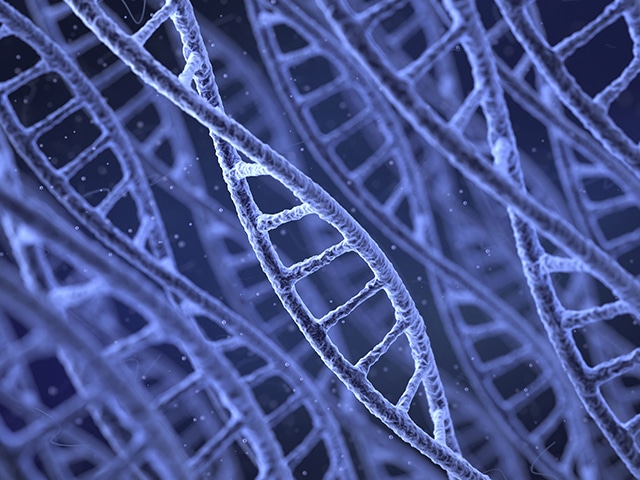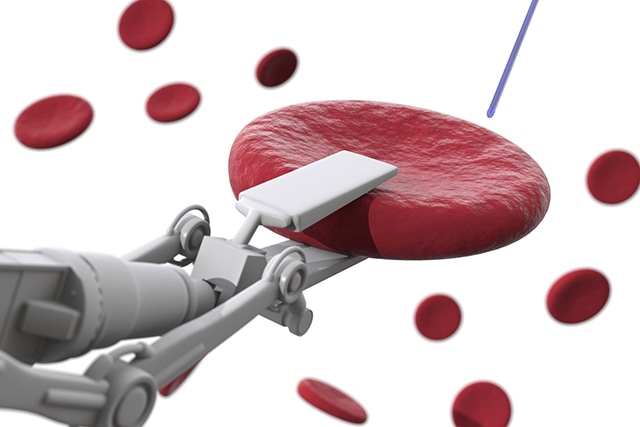
The fusion of nanotechnology and medicine is changing healthcare as we know it. Organizations and government entities are investing huge amounts in nanotech R&D; life science technology innovators across the world are delivering new products and technologies that almost seem straight from a sci-fi movie.
Take the "lab-on-a-chip" (LOC) concept, for example. Originally based on technology pursued by the U.S. military for detection of biological and chemical warfare agents, the LOC is now being used to examine DNA strands to identify cancer. Soon, researchers expect to have an LOC capable of rendering a complete diagnostic workup using just a drop of blood of urine.
Researchers at MIT have developed a lab test that can detect the presence of blood clots that lead to heart attacks and stroke. They began by modifying a previously developed injectable nanoparticle test for colorectal cancer. Because blood clots are formed from a protein interaction that requires the enzyme thrombin, the researchers added a thrombin sensor to the nanoparticle.
After the particles are injected into the blood stream, they interact with thrombin causing peptides to be released into the urine. A simple urine dipstick to test for the presence of these specific peptides alerts doctors to the presence of blood clots. The new test has potential applications in emergency medicine by giving doctors a diagnostic tool to quickly identify blood clots, as well as prophylactically in postsurgical patients, who could be given a set of dipsticks to take home after a procedure. Patients could test their urine each day and alert their surgeon if a blood clot forms.

Nanotechnology could be used to detect blood clots.
Pharmaceutical companies, most notably GlaxoSmithKline, are developing the latest iteration of implanted electroceuticals. Since most of the body's functions are controlled by electrical stimuli, researchers at GSK are pinpointing specific electric pathways and attempting to activate or inhibit certain ones to correct disease. Bioelectric medical devices could be used to control appetite, decrease blood pressure and stimulate insulin production in response to rising blood sugar.
ElectroCore Medical is exploring electroceuticals as a treatment for cluster and migraine headaches. The company's vagal nerve stimulator is also being developed as a treatment for asthma, epilepsy and irritable bowel syndrome. While GSK is blocking efferent signals in the brain with its implantable devices, ElectroCore is targeting afferent signals and its devices are not implanted and therefore avoid invasive insertion procedures.
Nanotubes are being used to reduce dental implant failures by medical researchers at Michigan Technical University and the University of Illinois at Chicago. Implants fail due to infection or separation from the surrounding bone. Using titanium nanotubes loaded with anti-inflammatory and antibiotic agents, researchers found that bone cells grew more vigorously around the implants, and the implants had a much lower rate of rejection and infection.
Expect to see more nanotech advances in the war on cancer in the near future: Researchers in Sweden have just discovered that nanoparticles can overcome drug-resistant breast cancer cells. They hope to use their findings to develop a targeted form of chemotherapy that can be directed to a specific part of a tumor cell to attack the disease while limiting collateral damage and adverse patient reactions.
Be sure to visit AZoNetwork on Facebook to share your views on this technology. You can also follow us on Twitter and ask any questions to our dedicated editorial team using the comments section below.
Image Credit: photos.com
Further Reading: nanotechnology for medical use, Electric dreams in medicine, Nanotubes to improve dental implants, Dental Implants that can heal faster, Nanoparticles can overcome drug resistance